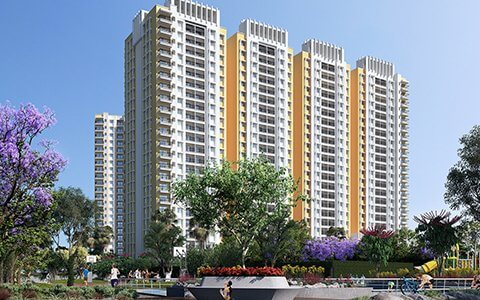It has been 75 years since India’s independence and the country has seen several tribulations since then. However, India has always strived to beat the odds and emerge stronger, with the country moving from a primarily agrarian economy to that dependent on the services sector. India’s real estate sector too has grown manifold and seized various challenges, despite the various challenges thrown at it.
The country has seen the evolution of the economy post-independence via agriculture and trading, industrialization, BPO services to IT and technology services. The great liberalisation of the economy in 1991 brought with it unbridled enthusiasm for the future as India saw MNCs entering and expanding the country. Private ector jobs became aspirational for India’s middle class. This fuelled urbanization in the country, with the typical joint family giving way to nuclear families. While the economy and the real estate sector started seeing real estate opportunities in large cities, they faced blips in the mid-1990s due to an economic crisis.
Economic and real estate activity picked up again post that, with large investments by global and Indian IT and Banking giants. During this time, rising income levels led to the emergence of gated apartment complexes in large cities. By the time the global financial crisis hit, India was resilient but witnessed external shocks to the economy. With the economy on the mend, and the real estate sector growing again, India saw investments soaring with foreign investors taking note of India’s real estate sector.
We have now come to a stage wherein Indian real estate is seeing foreign fund houses flocking to the sector, with the whole landscape becoming, even more, investor-friendly. Over the last ten years, the Indian real estate sector has seen about USD50 billion in inflows. Out of this, foreign investments account for about 65% of the inflows. Foreign funds’ exposure rose since 2017 after the enforcement of reforms such as the Real Estate Regulatory Authority (RERA), Good and Services Tax etc. RERA has brought in more transparency and accountability in the sector, infusing much-needed confidence to the investors.
The road ahead: Towards global standards, sustainability and equitable growth
India’s office sector has been resilient through the decades. From BPOs and IT support to global capability centres, India has moved up the technology value chain in the last two decades. India continues to be the stronghold of MNCs with its vast and deep talent pool, especially in the technology domain. The focus has shifted from ‘India being low-cost’ to ‘India having good talent and being more affordable.’ An increasing number of global firms continue to look towards India as some countries have started seeing recessionary pressures.
On the residential front, the demand has revived after several years, with demand and supply being more aligned in the market. However, the focus on affordable housing needs to be revived as this segment has the maximum demand. This may involve a relook at the Public Private Partnership (PPP) models to build and develop affordable housing stock across the country.
The rising foreign investments in the country’s real estate will pave the way for sustainable real estate, replete with green buildings and zero carbon buildings. Moreover, building designs and materials, latest technology is also getting influenced by global best practices, especially in the commercial sector. Technology has changed the way we live, work and slowly is also changing the way real estate functions. It is permeating through every function to enhance efficiency for all stakeholders.
The road ahead for the real estate sector has to be in tandem with the country’s progress. Growth in non-metro cities is imperative to more equitable growth in the country. We have seen, since the pandemic, that the interest in smaller cities has risen. This momentum needs to continue for offices, housing, physical infrastructure and support social infrastructure to grow in non-metro cities. The last two decades have been momentous for the sector but we need to take more strides for the sector to be more equitable and sustainable in the near future.





































